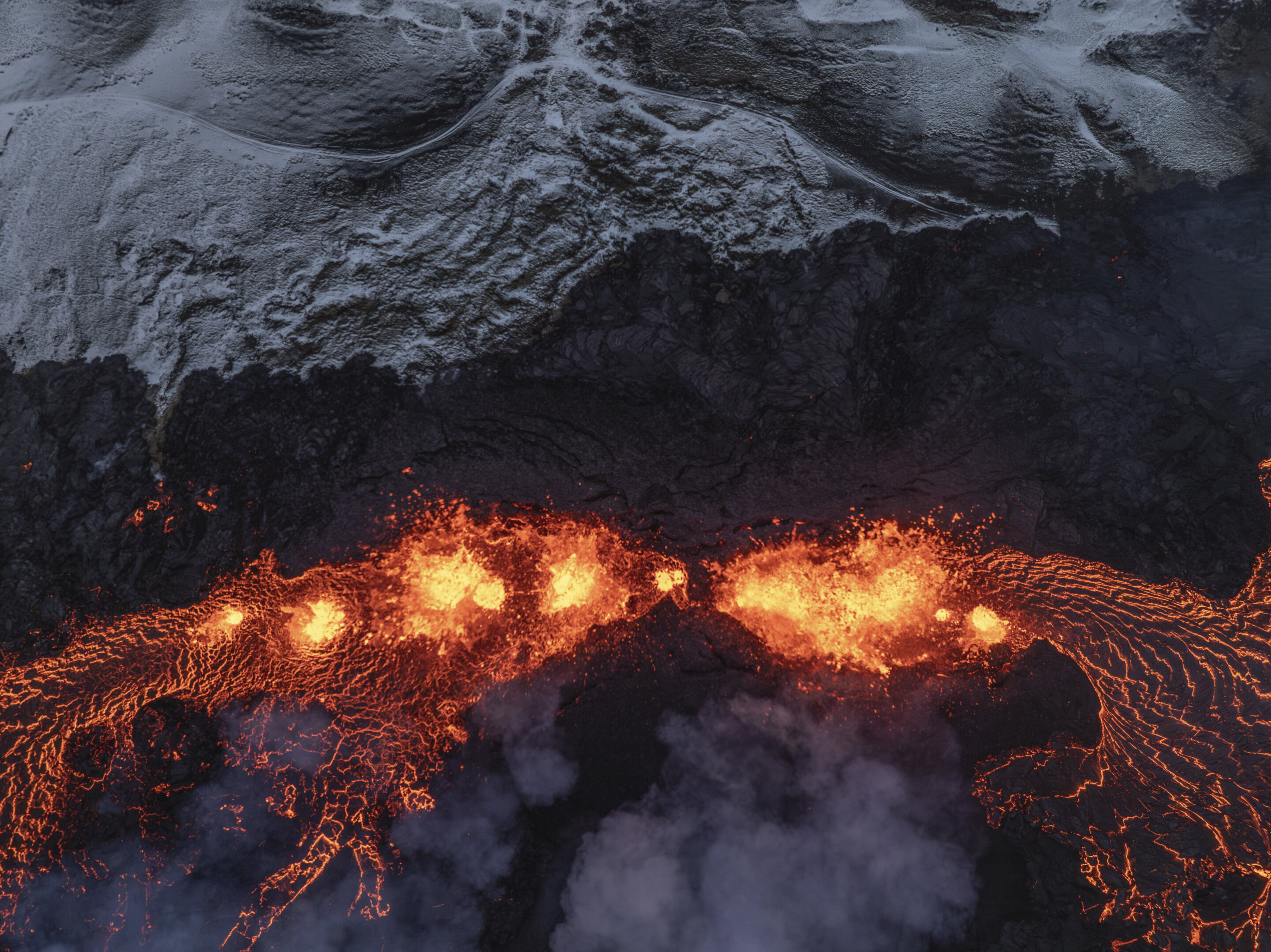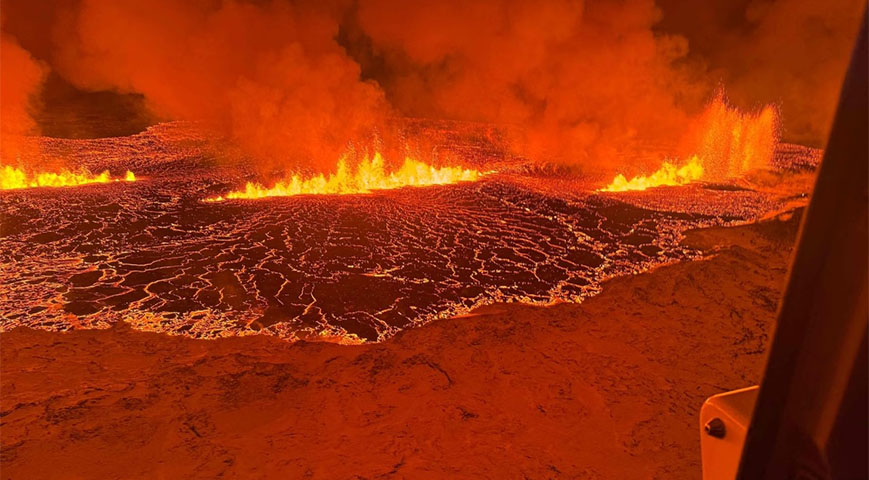Icelandic residents living around the world-famous Blue Lagoon and the surrounding town of Grindavik were evacuated due to a volcanic explosion on the country's Reykjanes Peninsula.
According to RÚV and the Icelandic Met Office, lava flows swiftly north of Grindavík, similar to the eruption on February 8. Later, RUV reported that lava was also flowing towards the Grindavíkurvegur road, which leads to Grindavik.

"The fissure is about three kilometres long [about 1.9 miles], and runs from Stóra-Skógfell towards Hagafell," according to the report.
Did you read this?
According to Iceland's civil protection service spokesman Hjördís Guðmundsdóttir, anti-lava barriers outside Grindavik are holding, and essential infrastructure has not been damaged by the eruption.

With the barriers diverting the lava, the town was not immediately threatened, and other sections of Iceland remained unharmed.
RUV reported that Iceland's largest international airport, Keflavik Airport, and smaller minor airports are still fully operating. However, RUV said volcanic gas will be observable in the town near the airport on Sunday.
Geophysicist Magnús Tumi Guðmundsson, who recently returned from a helicopter fly over the location, stated that the present eruption is the most violent in recent seismic activity.

According to Guðmundsson, the currently active fissure extends from the northern edge of Hagafell to Stóra-Skógfell. He guessed that it was around 3.5 kilometers broad.
Guðmundsson predicts that the lava flow will soon reach the Grindavíkurvegur road, based on its current speed.
Geophysicist Páll Einarsson told RÚV that the earthquakes near Grindavík follow the same pattern since October, with recurring magma flows occasionally reaching the surface. The previous eruptions "were strong, lasted a short time, but were powerful while they lasted," Einarsson explained.

The Blue Lagoon, located less than an hour's drive from Iceland's capital and largest city, Reykjavik, is one of the country's most popular tourist attractions.
The location is southwest Iceland's Reykjanes Peninsula, a broad finger of land that extends west into the North Atlantic Ocean from Reykjavik. In addition to the Blue Lagoon, the peninsula is home to Iceland's principal airport, Keflavik International.
Iceland has some of the world's most active volcanoes. Instead of a core volcano, the Reykjanes Peninsula is dominated by a rift valley filled with lava fields and cones.
The lagoon had been evacuated earlier in March due to earthquake activity. In November, 1,400 tremors were recorded in 24 hours, and it was shut down for a week.









